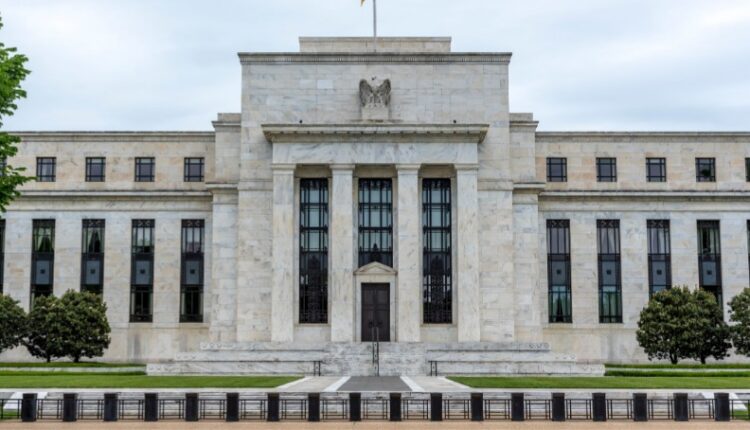
The 25 U.S. States Where Central Bank Digital Currency (CBDCs) Bills Have Been Introduced
With the recent collapse of Silicon Valley Bank and the potential breakdown of U.S. regional banks, central bank (CBs) digital currencies—otherwise known as CDBCs—are becoming a hot topic. Many fear, rightly or wrongly, that CBs are promulgating policies that are detrimental to the current U.S. dollar fiat system, potentially to user-in the new monetary paradigm.
While determining intentionality is beyond the scope of this article, it is undeniable that states throughout the union are working with the central bank seeking to develop CBDC based systems.
Below, a list of current states (25) that have introduced bills that will facilitate the implementation of CBDCs.
| Jurisdiction | Year | Bill No. | Status | Sponsor |
| Arizona | 2023 | HB 2770 | introduced | Wilmeth |
| Arkansas | 2023 | HB 1588 | introduced | Dismang |
| California | 2023 | SB 95 | introduced | |
| Colorado | 2023 | SB 90 | introduced | Gardner |
| Dist. of Columbia | 2023 | 25-0005 | introduced | Mendelson |
| Hawaii | 2023 | HB 525 | introduced | Nakashima |
| Indiana | 2023 | SB 468 | introduced | Garten |
| Kentucky | 2023 | SB 64 | introduced | Westerfield |
| Maine | 2023 | LD 91 | introduced | Moriarty |
| Massachusetts | 2023 | HD 3379 | introduced | Piesch |
| Missouri | 2023 | HD 1165 | introduced | Hicks |
| Montana | 2023 | SB 370 | introduced | Fitzpatrick |
| Nebraska | 2023 | LB 94 | introduced | Slama |
| Nevada | 2023 | AB 231 | introduced | Backus |
| New Hamshire | 2023 | HB 584 | introduced | Ammon |
| New Mexico | 2023 | HB 90 | introduced | Niebert |
| North Dakota | 2023 | HB 1082 | introduced | Judiciary |
| Oklahoma | 2023 | HB 2776 | introduced | McCall |
| Rhode Island | 2023 | HB 5543 | introduced | Kennedy |
| South Dakota | 2023 | HB 1193 | introduced | Stevens |
| Tennessee | 2023 | SB 479/HB 640 | introduced | Stevens/Bricken |
| Texas | 2023 | SB 2075 | introduced | Paxton |
| Washington | 2023 | SB 5077 | introduced | Petersen |
| West Virginia | 2023 | HB 3212/SB 549 | introduced | Storch/Woodrum |
At its core, CBDC are a digital form of central bank money that can be used as a medium of exchange, unit of account, and store of value. It is issued and backed by the central bank, and its value is determined by the monetary policy of the central bank.
CBDCs can be issued in two forms: retail and wholesale. Retail CBDCs are designed for use by the general public, whereas wholesale CBDC are designed for use by financial institutions.
There are different types of CBDCs: account-based and token-based. Account-based are linked to an individual’s bank account, and transactions are recorded in a centralized ledger maintained by the central bank. While token-based are based on distributed ledger technology (DLT), and transactions are recorded on a decentralized ledger.
The benefits include faster and cheaper transactions, enhanced financial inclusion, and reduced financial intermediation. CBDCs can also help central banks to implement monetary policy more effectively.
However, there are also challenges associated with the implementation of CBDCs, such as the potential impact on financial stability, privacy concerns, and the risk of cyber attacks.
As such, the design and implementation needs to be carefully considered to ensure that they do not undermine the existing financial system.
Analyst Concerns About CBDCs
Additionally, some analysts are concerned that by doing away with cash altogether and making currency completely digit, central authorities will have undue power to ‘turn off’ people bank accounts. This could be done for political reasons—such as criticizing the government—or through ideological reasons, such as limiting consumers purchases for travel or red meat (limiting carbon).
As well, there is concern the governing power structure could simply take consumer funds for things such as back taxes and fees without due representation. On an overarching level, the root concern is that money will be viewed as the central bank asset which consumers are ‘privileged’ to use, rather that money (savings) being the aggregate of one’s individual earned wealth.
Whether these concerns are valid or not remains to be seen. But the march to pursue CBDCs by central banks across the world is relentless. Given the immense power it gives them to influence, direct and corral consumer spending, central banks are likely to continue such programs irrespective of the lack of broad public support.



